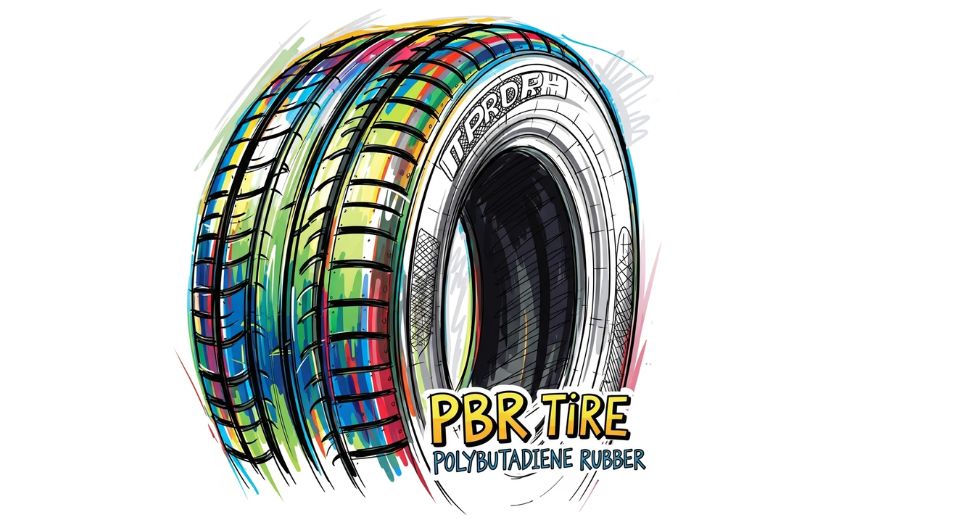
Aug 12, 2025

The most recent report on the Global Polybutadiene Rubber Market, crafted and published by Metastat Insight in a new light, presents a panoramic overview of a segment of the synthetic rubber industry that is characterized as much by flexibility as by profound connectivity with varied industrial uses. This component of the synthetic rubber market has a special image of being highly resilient, elastic, and compatible in terms of use in fields that require high performance as well as longevity. The study examines how this material has been incorporated into diverse production streams, ranging from automobile production to consumer products, in proof of its diversity without relying on simplistic over-generalisations.
Polybutadiene rubber occupies a unique niche among synthetic elastomers, having been molded over decades of technological evolution and manufacturing know-how. In contrast to materials that have only stayed in specialized applications, it has moved into sectors where both economic and functional factors drive the choice of materials. The properties it provides resistance to wear, flexibility under stress, and performance at extreme temperatures have promoted it from a mere commodity to a desirable component in various manufacturing industries. These qualities are not intangible virtues; they are realizable in the form of increased tyre lifespan, better mechanical performance, and continued dependability in products which have to withstand repeated stress.
This lasting pertinence is underpinned by a manufacturing system that reaches out well beyond the plants which actually formulate it. The feedstock suppliers, additive manufacturers, and compounding experts each add to a chain that combines efficiency with quality. It creates a market that has successfully developed both scale and specialisation, serving customers who insist on consistency but also for bespoke formulations. For example, the range of polymer structure, such as high-cis, low-cis, and others, enables makers to specify precisely the properties they need for their final product. Such precision fine-tuning not only meets current manufacturing needs but also fosters innovation in application fields that were not adequately served by conventional rubbers.
The production and consumption geography further enhances the depth of character of this market. Countries with robust auto manufacturing hubs have inevitably had a consistent demand for polybutadiene rubber, while new industrial clusters are adding it into their own manufacturing. This diversification allows the market to be far less reliant on a sole region or use, bringing a constantly evolving balance between established demand and prospects. In some regions, manufacturers are closely collaborating with research centers to create better grades, trying to balance performance and cost-effectiveness.
Advances in polymerisation technologies have also had an impact on the production and perception of polybutadiene rubber. The transition towards processes permitting increased control over molecular structure has not only enhanced the mechanical properties of the product but also made the material's quality more consistent from batch to batch. This consistency is of vital concern to industries where tiny variations can affect ultimate product performance. These refinements in the production process are typically quietly integrated into the supply chain, but their effects can be extensive, influencing the way makers design products and the way buyers use them.
Sustainability concerns are also making themselves known. Producers and downstream industry players are becoming more concerned about the environment, and as a result, there is exploration for energy-saving production processes and sustainable procurement of raw materials. Although polybutadiene rubber is a man-made product, recycling methods and rubber waste recovery are starting to influence industry discussions. These initiatives do not reduce the requirement for new material but instead supplement it by balancing production with wider environmental goals, enabling the market to progress with both commercial and ecological accountability.
The competitive dynamics in this segment are complex, influenced as much by capacity and reach of distribution as by the level of technical support made available to customers. Suppliers who are able to cooperate with customers to minimise formulation or resolve manufacturing issues tend to establish stronger, longer-term relationships. This advisory element is becoming more prominent, with some manufacturers investing in collaborative research projects and mutual development programs. Such alliances can unlock opportunities to applications where polybutadiene rubber was not conventionally thought of as suitable, extending its coverage without losing its proven strengths.
Consumer-oriented industries that depend on performance and durability indirectly influence the direction of the market too. When companies in such industries alter specifications or design, it can cascade down the supply chain to influence demand for specific grades or processing procedures. This way, the market is exposed to a continuous stream of input from upstream technical advancements and downstream product innovation. This relationship maintains a cycle wherein innovation is fostered yet is kept anchored to pragmatic manufacturing requirements.
In the future, the Global Polybutadiene Rubber Market, as discussed in the comprehensive work of Metastat Insight, presents a vision of an industry walking the line of tradition and modernisation. Its centuries-old presence in dominant industrial segments is being complemented by continuous advances in production, increased diversity of usage, and a heightened sensitivity towards environmental factors. Although external factors will continue to shape its path, the inbuilt flexibility of the material, along with the technological advancement of its production network, means that it will always be a core component of manufacturing strategies in industries globally. In doing so, the market maintains its position not through temporary trends, but through a consistent capacity to address the changing needs of industries that necessitate both dependability and performance.
Drop us an email at:
Call us on:
+1 214 613 5758
+91 73850 57479